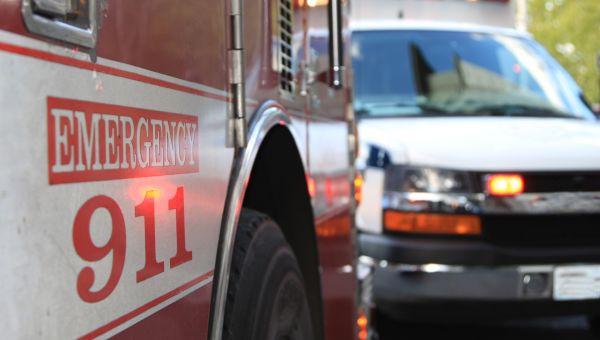5 things to know about headaches and serious health conditions
Sometimes headaches are a symptom of a serious health condition. Learn when to see a healthcare provider.
Updated on April 16, 2024

Headaches are the most common condition that affects the nervous system, and almost everyone has one at some point in their lives. Most headaches—even very painful ones—won’t have long-lasting consequences. “They’re serious in that they’re severe and debilitating, but they aren’t life-threatening,” says Robert Coni, DO, a neurologist with Grand Strand Medical Center in Myrtle Beach, South Carolina.
Certain headaches, however, can sometimes be concerning to neurologists (a medical doctor who treats conditions of the nervous system). And symptoms that appear with a headache or a changing headache pattern could be a sign of a serious medical condition. Learn which headaches are not likely to indicate an underlying medical condition, and which might mean an emergency.

Primary or secondary?
There are many different types of headaches, but healthcare providers usually group them into two categories: primary or secondary. “With a primary headache, the headache is actually the disease,” says Dr. Coni. These include cluster headaches (bouts of frequent headaches), tension headaches (mild to moderate headaches that may feel like a band around the head) and migraines (moderate to severe headaches often accompanied by nausea or sensitivity to light and sound). Primary headaches can interfere with daily life, but they usually do not indicate an underlying condition.
It’s the secondary headaches—where the headache is a symptom of another disease—that could signal a more serious problem.

What to look for
Even if you have a primary headache, you can still develop a secondary headache. Neurologists look to other symptoms to help them determine what type of headache you have. “We look for systemic signs [throughout the body] like a fever, weight loss or generalized weakness,” Coni says. “Those are unusual for primary headaches.” Neurologists also looke for symptoms of a stroke, when blood supply to the brain is blocked or reduced, or when a blood vessels bursts in the brain. Symptoms of stroke can include weakness or a loss of sensation in one half of the body, facial paralysis (unable to move part of the face), or one arm drifting down.
A changing headache pattern is also cause for concern. “If someone goes from having intermittent headaches twice a month to daily, or they get headaches in unusual circumstances, that’s a sign of danger,” says Coni. “If it’s an older person with a new headache, that’s worrisome. Migraines usually present [show up] before someone is in their 30s,” he adds. If you notice any of these signs or patterns, see a healthcare provider immediately.

Meningitis
If your headache comes with a stiff neck, a fever and possibly a rash, it could be a sign of an emergency. These are all symptoms of meningitis, a potentially deadly inflammation of the protective lining around the brain and spinal cord. Nausea, vomiting, confusion and sensitivity to light are also symptoms.
Meningitis is mostly caused by viruses, though bacteria and even fungi can also cause it. “It often looks like an upper respiratory infection [which affects the upper airways like the nose, sinsues and large airways) with a headache, and it can be lethal if it’s not treated early,” Coni says. Meningitis is contagious and outbreaks [sudden increase in cases] often happen when people live close to each other, like in a dormatory or elder care facility.

Encephalitis
Whereas meningitis is inflammation of the brain’s protective membrane, encephalitis is inflammation of the brain itself, most often caused by a virus. Though children are at greater risk for the condition, “Adults can get it too,” says Coni.
Like meningitis, mild cases of encephalitis can mimic the flu, with a minor headache, sore throat, cough and fatigue. Severe encephalitis can cause a more painful headache, as well as sudden fever, drowsiness, vomiting, confusion, hallucinations (seeing or hearig something that is not actually there), muscle weakness, sudden and severe dementia (problems thinking, remembering, or making decisions), memory loss, partial paralysis (inability to move) and seizures (burst of electical activity in the brain that can cause shaking or twitching of the body, changes in behavior, or changes in alertness).

Aneurysm
An aneurysm is the ballooning of an artery due to a weakness in the artery wall. It can occur in any artery, but is most often found in the abdominal aorta (the largest artery in your body) or brain. You can have an aneurysm for years without knowing it, since it typically doesn’t have any symptoms—that is, until it bursts (also called a rupture). At that point, it can cause bleeding around the brain—called a subarachnoid hemorrhage—or in the brain, known as a hemorrhagic stroke.
A sudden, severe headache—one that you might call the worst headache of your life—is one sign of a ruptured brain aneurysm. Nausea, vomiting and drowsiness are other symptoms of a brain bleed, and weakness, facial drooping and difficulty speaking are signs of a stroke. A ruptured brain aneurysm causes death between 30 and 40 percent of the time.

Ischemic stroke
Hemorrhagic strokes, or bleeding in the brain caused by a burst blood vessel, are rare and make up about 15 percent of all strokes. Much more common are ischemic strokes, which are caused by a blockage that cuts off blood supply to the brain. “These can be associated with headaches,” says Coni, “and there’s usually neurological dysfunction that occurs at the same time as a headache.”
If you’re concerned that you or someone around you may have had a stroke, you need to act F.A.S.T., which can help you remember the signs of a stroke and when to get help. F.A.S.T. stands for:
- Facial drooping
- Arm weakness
- Speech trouble
- Time to call 9-1-1- for emergency help

Concussion or TBI
Headaches are one of the most common complications of a traumatic brain injury (TBI) or concussion, which is a mild form of TBI. About 30 percent of people who have had a TBI get headaches for a long time after their injury. Concussion symptoms can be easy to miss and you might not make the connection between the symptoms and the accident.
If you’ve had a head injury recently, and you have a stubborn headache that gets worse, seek medical attention. Other danger signs can include:
- Weakness
- Numbness
- Decreased coordination
- Nausea and vomiting
- Slurred speech
- Seizures
- Unresponsiveness
- One pupil bigger than the other
- Confusion
More On


video

article


video


video


video
